64 Audio tia Fourté Review: A Swing and a Miss
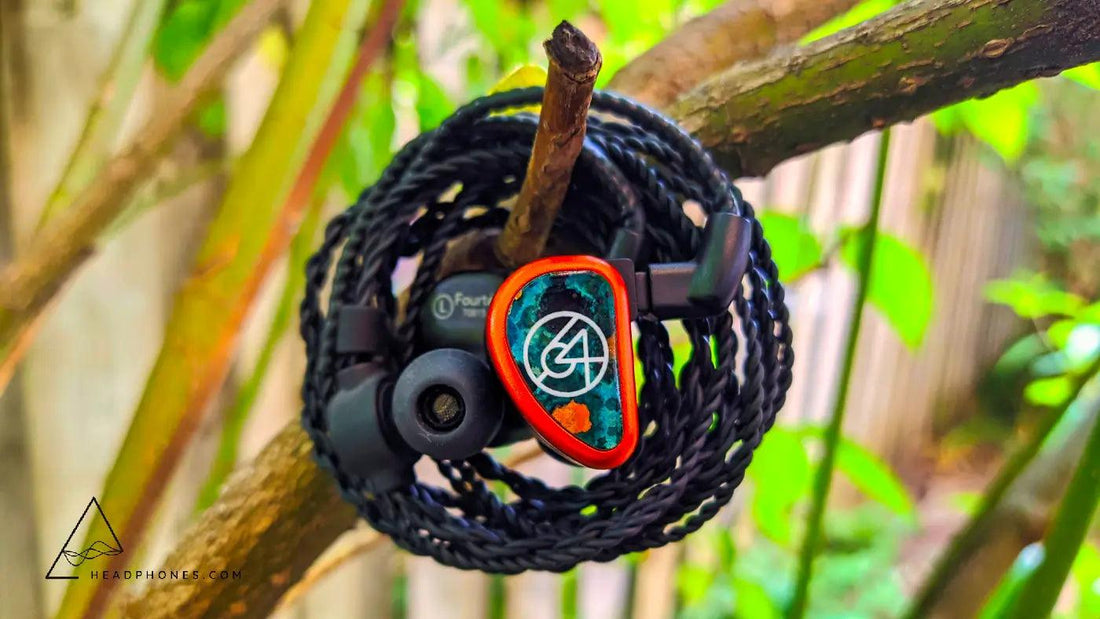
Review written by @Fc-Construct
Loaner unit provided by headphones.com
Introduction
A little while ago, I reviewed the 64 Audio tia Trió and was thoroughly impressed by it. Today, I’ll be looking at its older brother, 64 Audio’s $3,600 flagship tia Fourté. Like the Trio, the Fourte is a hybrid setup but boasts an additional BA driver for a final 1 DD + 3 BA configuration. Given how much I enjoyed the Trio, I’m looking forward to seeing what 64 Audio has brought to the table for their flagship product.
- Product Summary
- Build and Comfort
- Frequency Response Measurements
- Tuning
- Presentation
- Comparison to Other 64 Audio IEMs
- Conclusion
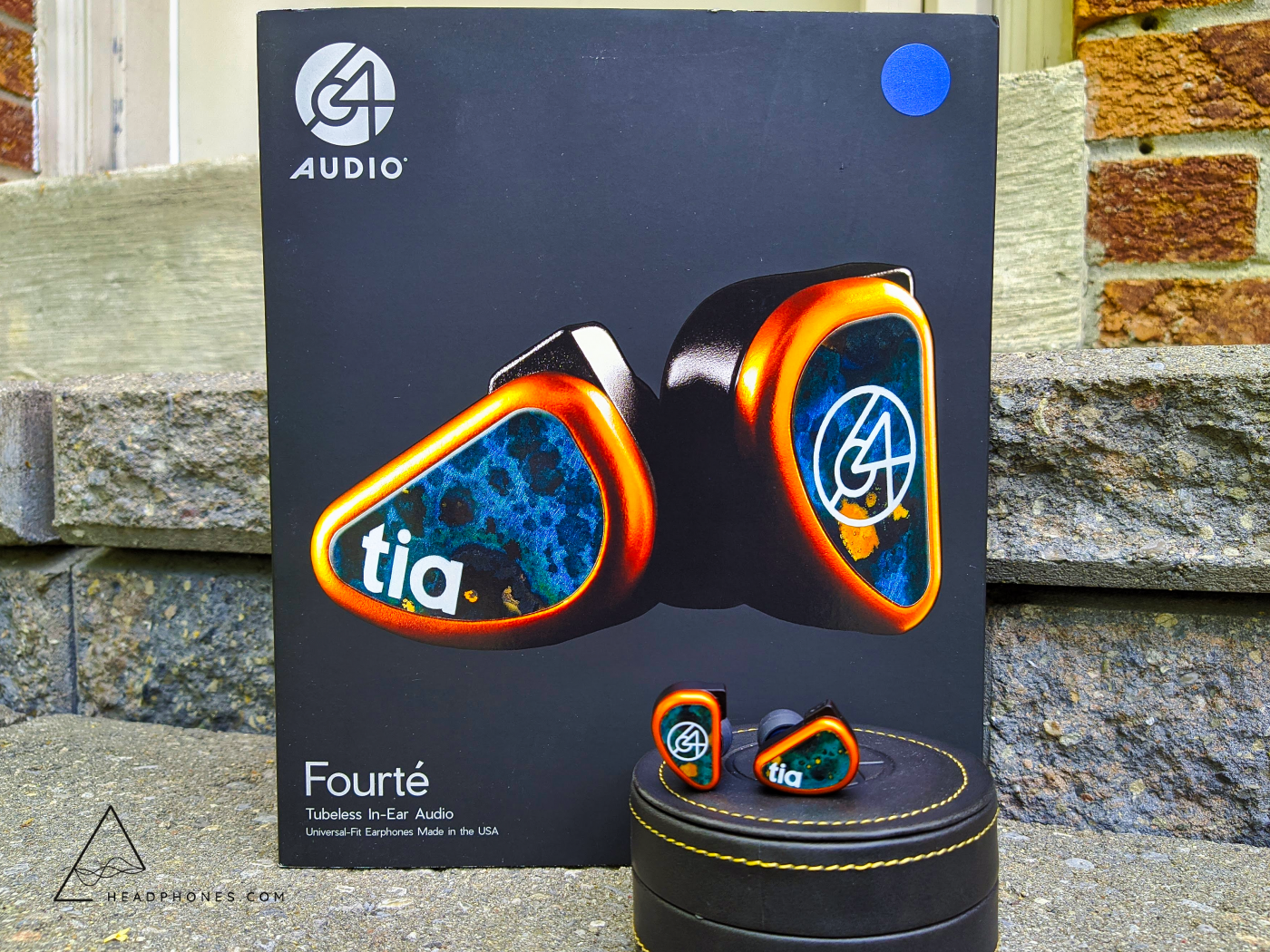
64 Audio Tia Fourte - Product Summary
- Reasons to buy
- Great Comfort and Fit
- Exceptional Soundstage and Imaging
- Solid Resolution
- Reasons not to buy
- Price
- Poor Tuning
- Weak Layering and Note Separation
- Doesn't Live up to Other 64 Audio Offerings
 |
Get the 64 Audio Tia Fourte for the best available price at headphones.com. |
Discuss the 64 Audio Tia Fourte on the HEADPHONE Community Forum |
Build and Comfort
My loaner unit didn’t come with the full accessory set, so I won’t go through all the details of that in this review. You get the same awful 2-pin cable like in the Trio. It’s very tangle prone, has significant amount of cable noise and memory, and a needlessly bulky 90° jack. The shell of the Fourte itself is the same as the Trio. It’s an aluminum body for a durable and lightweight build. The faceplate has a nice copper-colored edge but I’m not a fan of the blue-green oxidized look. I’m not sure how they achieved it, but it looks a bit like a sticker.
Comfort wise, I have no complaints. The Fourte is ergonomically shaped with a very accommodating nozzle size and length. There are two vent holes on the shell that eliminate any sort of pressure buildup in the ear during insertion or movement while creating a slight sense of openness. I felt the isolation was rather decent. Not total silence but good enough for daily commute.
Frequency Response and Tuning
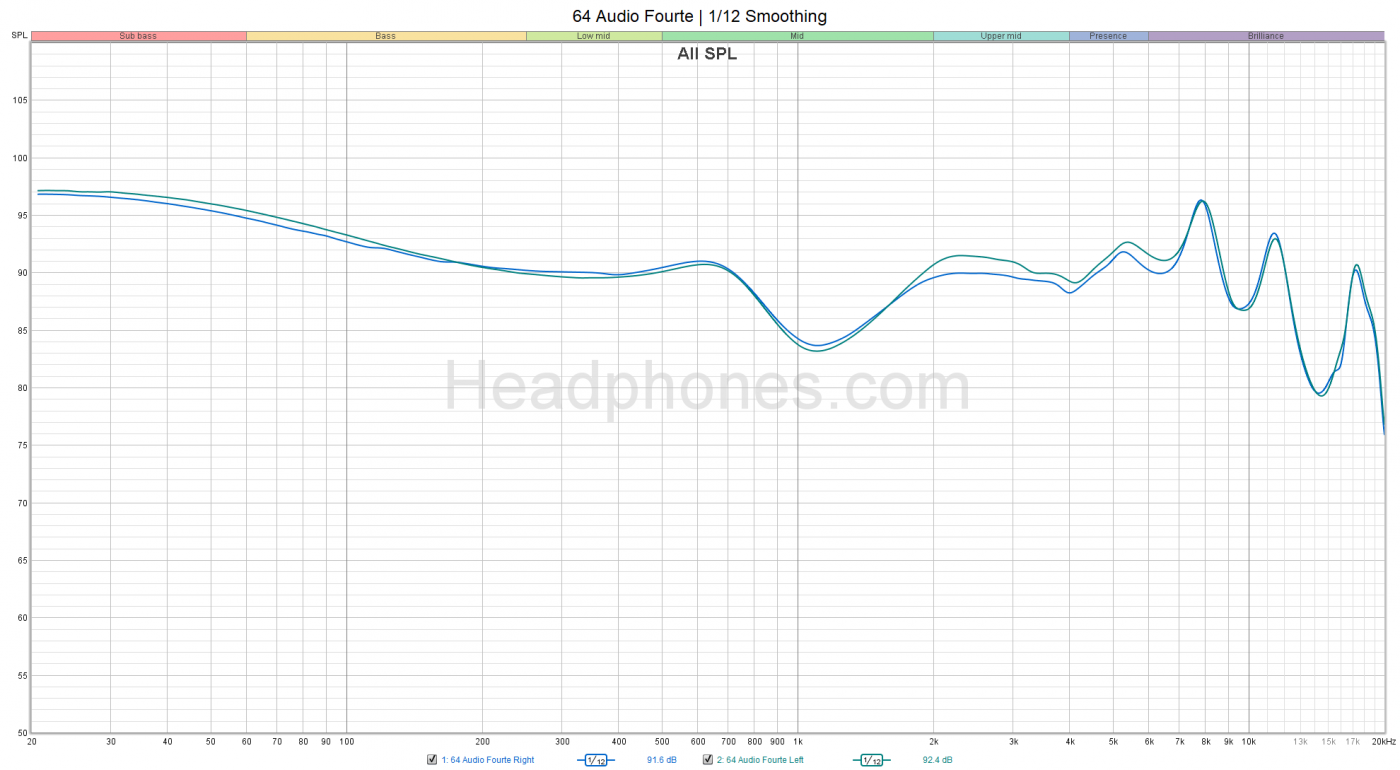
Frequency response of the 64 Audio tia Fourte. Measurement taken with an IEC-711 clone microphone. Comparisons can only be made relative to other measurements taken by this specific microphone. A peak at about 8 – 10 kHz is likely an artifact of the measurement rig and may not exist as depicted here. Measurements above 8 kHz are not accurate. If possible, reference multiple measurements.
Err yea. Usually I like to talk about the sound of the IEM a bit before showing the graph so you can see how my thoughts might line up with the measurement. But in this case, there really isn’t any point. How would you even begin to interpret that graph? I sure don’t know how. Either way, suffice it to say it’s not a good showing.
Tuning
Let’s start with vocals. Despite the apparent lack of pinna gain, vocals aren’t totally butchered. It is however rather smothered sounding. Male vocals are more negatively affected as the excess low-end energy ends up blanketing the upper mids clarity. Female vocals tend not to suffer as badly given the natural higher pitch of their vocal range. With a little bit of brain burn-in, vocal performance is acceptable but hardly befitting of flagship status. On a positive note, vocals are clearly separated from other instruments and its performance doesn’t detract too much from musical enjoyment. Honestly, if anything, I’m mostly surprised the midrange has any semblance of timbre with a tuning like what we see in the graph. Unfortunately, as far as tuning goes, this is the best the Fourte gets.
The Fourte’s treble is flawed. Hats and cymbals are thin, shrill, and overly sharp. Yet confusingly enough, the Fourte is not a bright IEM. There is no treble brilliance. The timbre of the hats and cymbals are completely skewed to only capture the transient attack and nothing else. I wouldn’t even consider it crisp because there’s practically no decay to round out the note. It’s like hearing the first half the actual note. I don’t find it piercing necessarily. Rather, it’s almost annoying because you can’t help but notice the treble in the background adding some sort of incoherent noise.
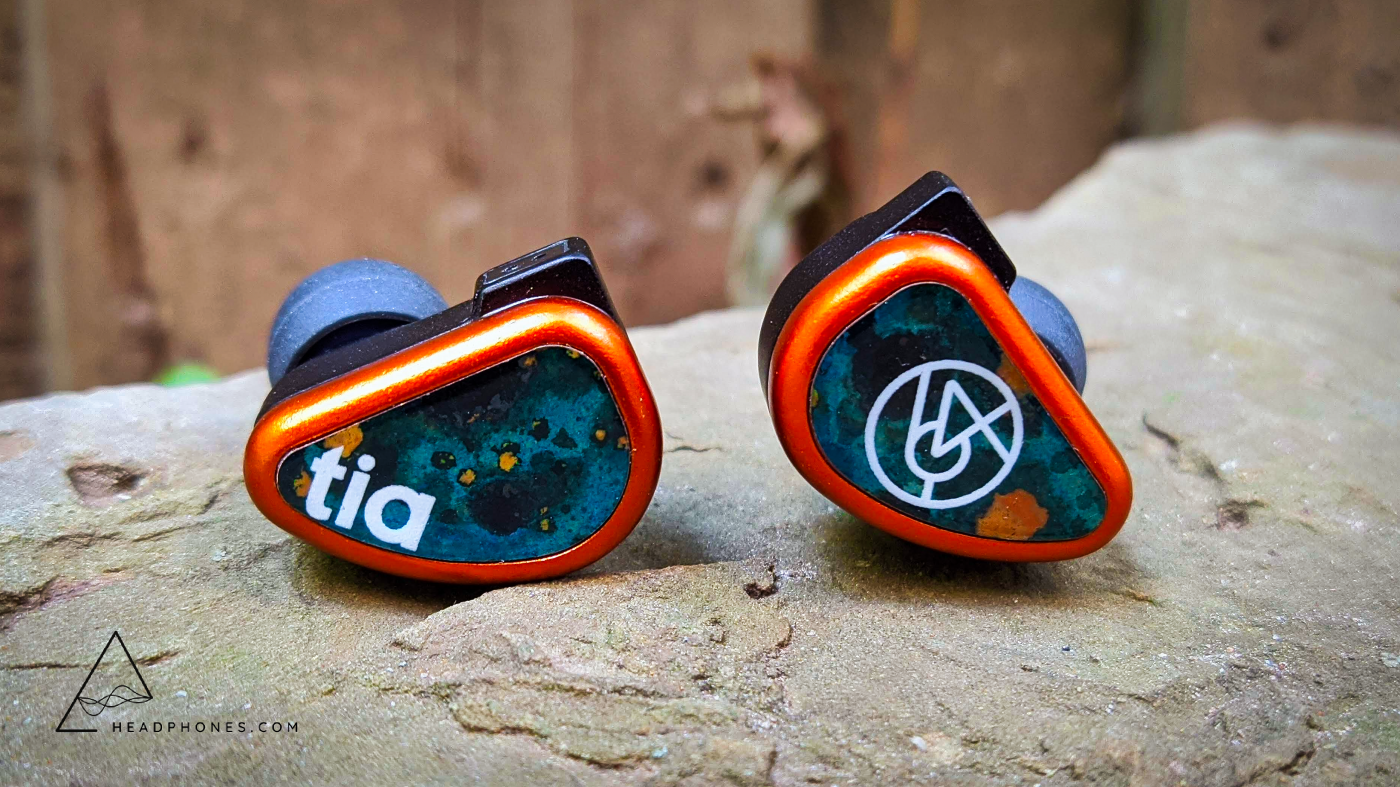
Like the other 64 Audio IEMs I’ve reviewed thus far, the Fourte has a significant bass elevation. The Fourte is the foremost example of this. There’s a lot of low-end energy that sort of “hangs” around. On one hand, it gives the Fourte a lot of bass presence. On the other hand, the way it’s tuned buries and masks a significant amount of musical information and definition. Here is my list of complaints:
- The weight and impact of the kick drum is limited due to a lack of contrast. Note definition is blunt and soft while decay is unexpectedly short and fades quickly. The oomph I would normally expect from the kick is effectively diluted and washed out. In busy rock tracks, the kick and toms are susceptible to blurring into each other in the background.
- The sharp, distinctive crack of the snare is suppressed due to that massive 1 kHz dip.
- Defined bass lines are buried and the pop of the bass guitar is muted.
- Chugging electric guitars are muddied and sound like they’re slogging through the track. Lead guitar lines have no upper mids presence or clarity to pierce through the recording. The all-important midrange tone that every electric guitars player strives to perfect is also warped by the Fourte’s wonky overall tonality, diminishing the emotional effect of this instrument.
- Acoustic guitars are generally fine if it’s part of a larger track and limited to fingerstyle guitar and picked strings. But in acoustic recordings with full on strumming as its foundation, there is an overabundance of the lower mids. And no, it doesn’t sound “lush”. It sounds like there’s too much fat that needs to be trimmed.
- Piano notes exhibit a strong boxiness to them.
As you can see, I’m not a fan of the tuning. It’s not that I hated the Fourte. I just didn’t find it very enjoyable to listen to music with. Of course, while good music is always enjoyable, the Fourte made me feel like 20 – 30% of my music is missing with the way instruments get buried or how short the note decay is.
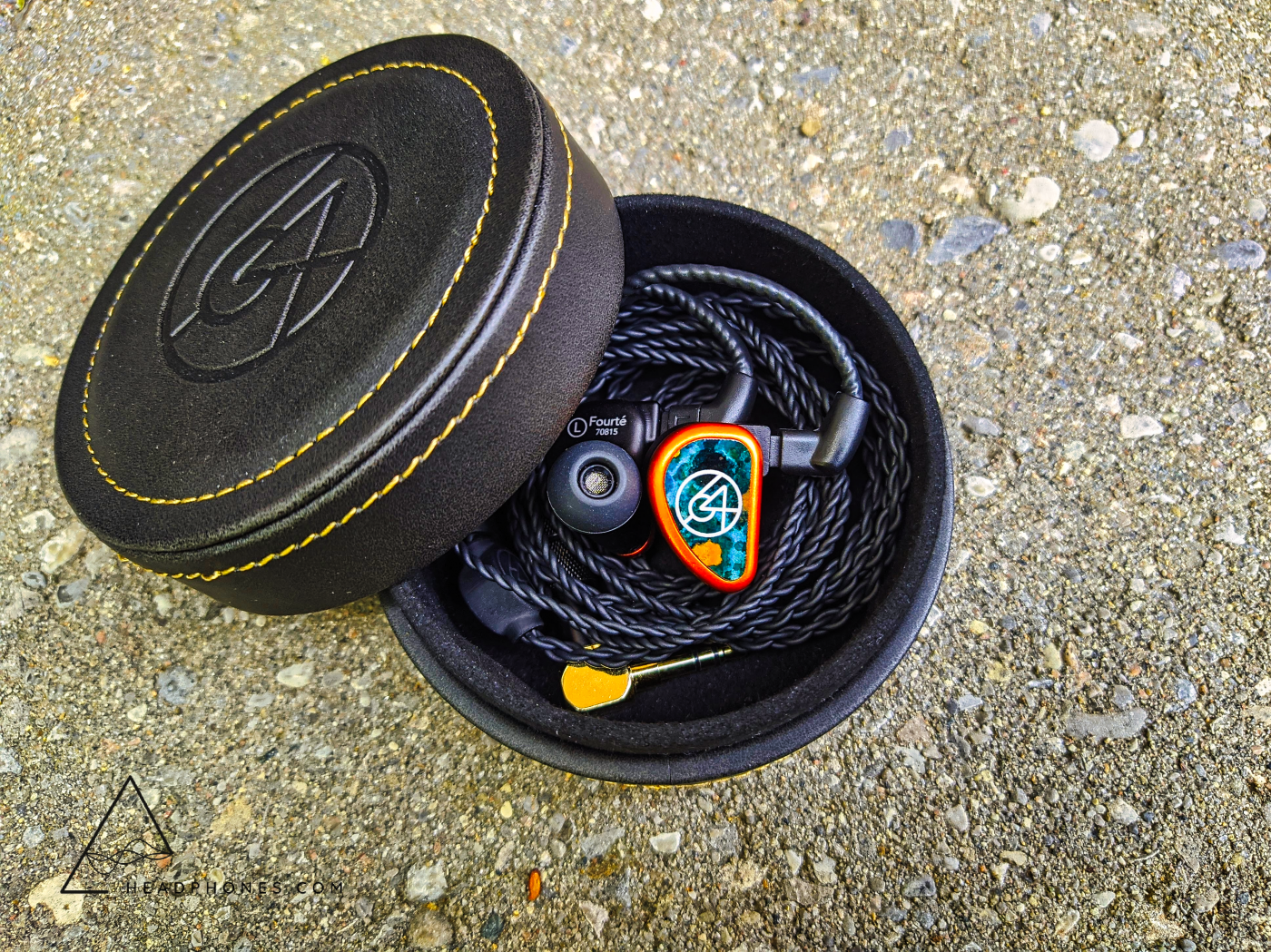
Presentation
Tuning woes aside, the staging of the Fourte is very impressive. Superb horizontal width, great depth, and respectable height. Imaging takes full advantage of this soundstage to place instruments with nuance and precision. Instrument separation, layering, and note definition are subpar as a result of the tuning. There just isn’t enough clarity to allow for instruments to breathe. Resolution, when the instrument isn’t being somehow obscured, is surprisingly good all things considered. It’s not to the level of the Trio but I think it beats out the U6T. While most of the 64 Audio IEMs I’ve heard so far had quite good dynamics, the Fourte didn’t live up to that standard. There is a glimpse of the 64 Audio style dynamism, but the lack of tonal contrast leads to a diminished sense of impact.
Love our in-depth reviews?
We test and review hundreds of headphones every year. Sign up to get the latest news, reviews, guides, and more in your inbox. Join the 60,000+ like-minded audio lovers who love our newsletter!
Comparison to the 64 Audio Trio
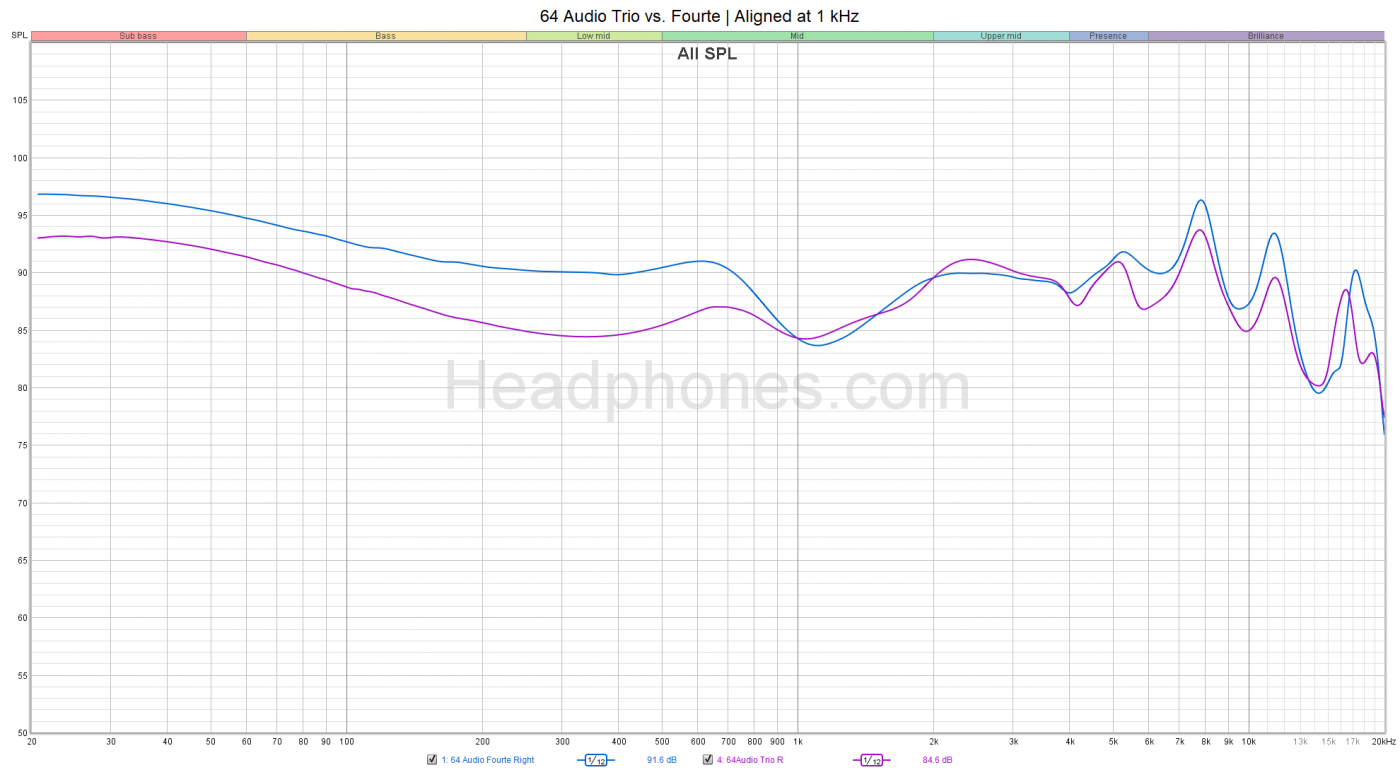
There is no question in my mind that the Trio is the much better IEM in every way except staging where the Fourte might have a small edge. Though the Trio’s tuning itself is a little wonky, it’s nowhere near the level of the Fourte. The Trio is so much more engaging and enjoyable to listen to music with than the Fourte. On a technical level, the Trio is more dynamic than the Fourte while also having better resolution to boot. I don’t have to strain to hear instruments that should be there. As far as I’m concerned, the Trio and the Fourte are such different IEMs that there isn’t much value in comparing them. It would be better to read my Trio review alone.
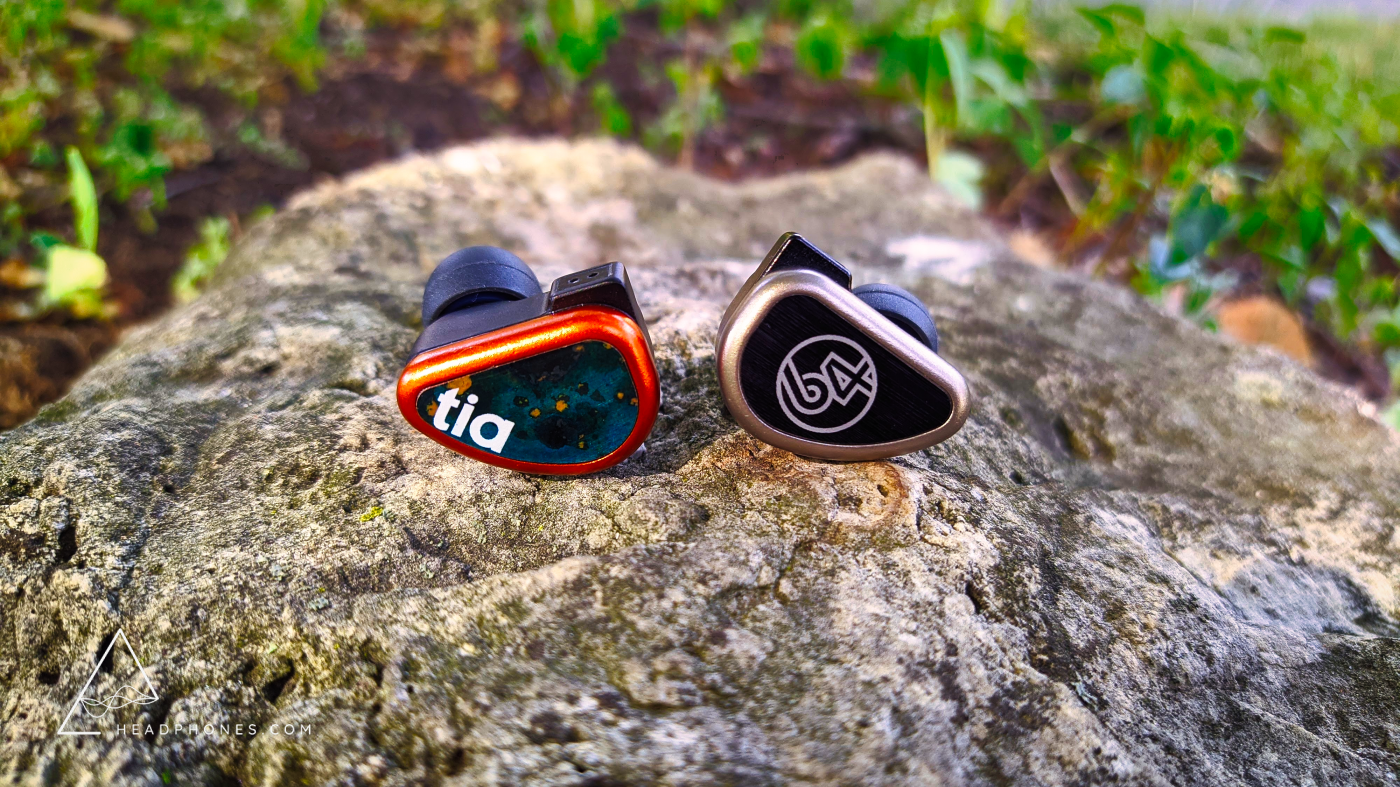
Should You Buy It?
No. There really isn’t any way for me to justify the existence of the 64 Audio Fourte. Sure, some aspects of it might be good, great even, but it frankly does not make up for the rest of the Fourte’s deficiencies. I generally don’t focus too much on price once it gets past kilobuck pricing and firmly into the luxury realm, but an asking price of $3,600 for performance like this is simply too much. The Trio is two-thirds the price and is far superior in my eyes. And it’s not as if the Fourte fills any sort of special niche either. Just because it is “different” and “unique” doesn’t necessarily mean it’s good in some way where others lack. It is not. The unfortunate truth is that the Fourte is a hard swing and a miss from 64 Audio. Even more unfortunate is that it happened with their flagship product.
- Fc-Construct
---
Buy the 64 Audio Tia Fourte for the best available price.
Discuss the 64 Audio Tia Fourte on the HEADPHONE Community Forum Here.
---
